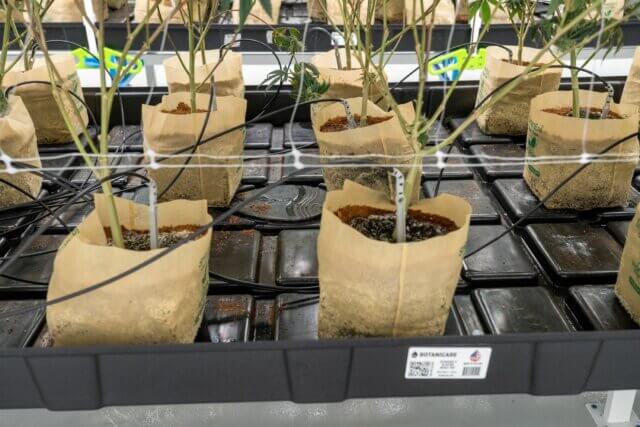While the discussion around sustainability in the cannabis industry often focuses on energy consumption, innovation in water systems is driving growing techniques that can significantly reduce water use and waste.
This takes on greater importance in today’s environmental reality, where water shortages and wastewater quality concerns are becoming commonplace in many states as are corresponding conservation requirements due to drought. Irrigation technology for indoor growing has evolved to the point where systems can purify source water – whether from municipal supplies or underground wells – for use in the growing operation and then recapture any excess water for reuse. Even condensate that is pulled from an indoor grow’s dehumidification system can be captured for reuse in irrigation. To put it simply, here’s how it works:
- Source water filtration. Source water typically is purified before it enters the irrigation system to remove impurities that can negatively impact plant health and allow for more efficient use of nutrients, which are added during the irrigation and fertigation process.
- Precision irrigation and fertigation. Technology advancements have amplified the adoption of smart controls and sensors for irrigation and fertigation over the last few years. With the ability to customize schedules, doses and redundancies in systems and logic, growers can automate the entire water system to enhance the efficiency of the irrigation and fertigation process, ensuring feeding just the right amount to the plants and not wasting unnecessarily.
- Condensate water reclamation. Humidity is the perfect source to recycle back into the growing operation. Precise irrigation drives transpiration from the plant. Dehumidifiers can then capture the moisture in the air and send it into a tank to be treated by a purpose-built condensate water filter to be routed back into the irrigation process.
- Wastewater reclamation. Runoff water is an everyday problem for cultivators. Many cultivators will truck off the water to be treated or just simply drain the wastewater into the local treatment system. However, technologies are available to treat excess nutrient-rich cultivation wastewater on site, thereby reducing wastewater impacts.
Taken together, installing and utilizing a water system that integrates all four of these purification and reclamation techniques can reduce total water use as well as minimize wastewater. When used in combination with renewable substrate materials in which plants are grown – such as coconut coir in compressed form – even greater efficiencies can be achieved. For example, when the coconut coir is watered, it expands to the designed volume and is able to retain water and nutrients for improved water use management throughout the growing operation. Additionally, the coconut coir is compostable into soil, further reducing waste.
Once a grower can prove less water is being consumed, many utility companies will offer credits or discounts to support the ongoing sustainability aspect of cultivation sites. Just as importantly, the water system technologies that are taking hold in the cannabis industry have the potential of being applied to other growing environments. These range from indoor horticulture operations in harsh climates to outdoor agriculture where the need for water reclamation and reduction increase due to conservation measures.
All of these technological improvements also can have a positive compounded impact on helping growers achieve United Nations Sustainable Development Goal #6 – Clean Water & Sanitation for all – through the introduction of and improvements in closed-loop processes in the growing cycle.
